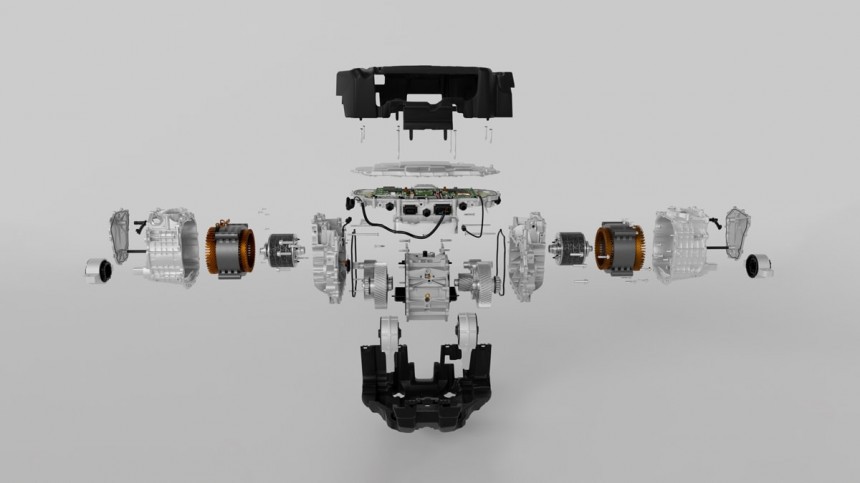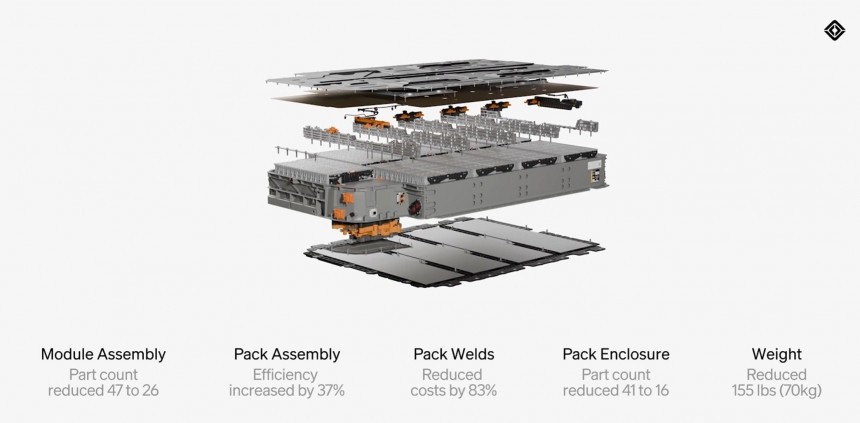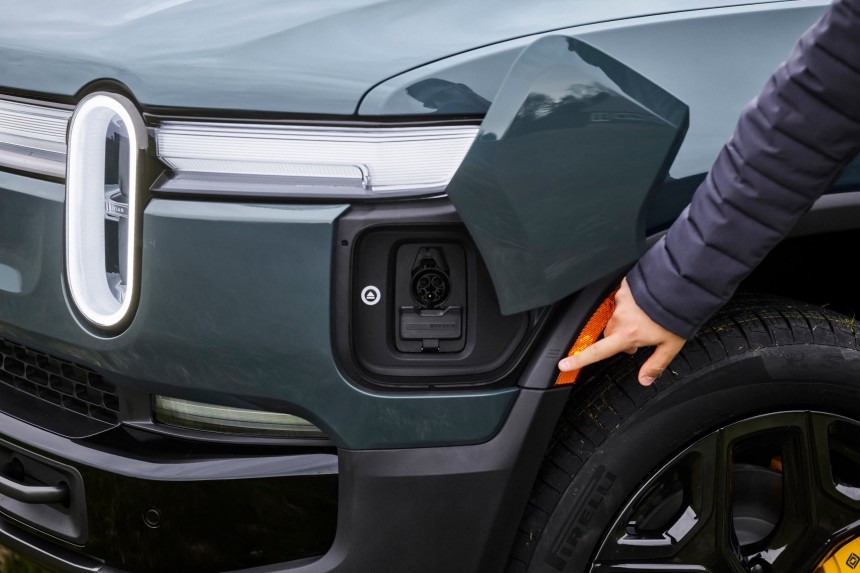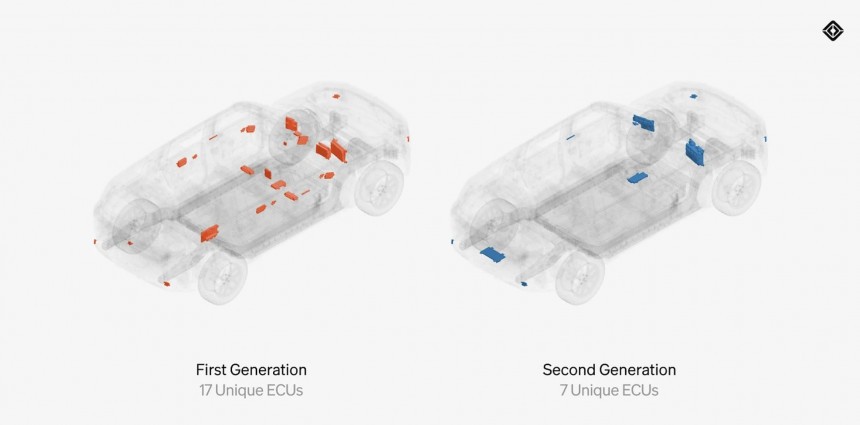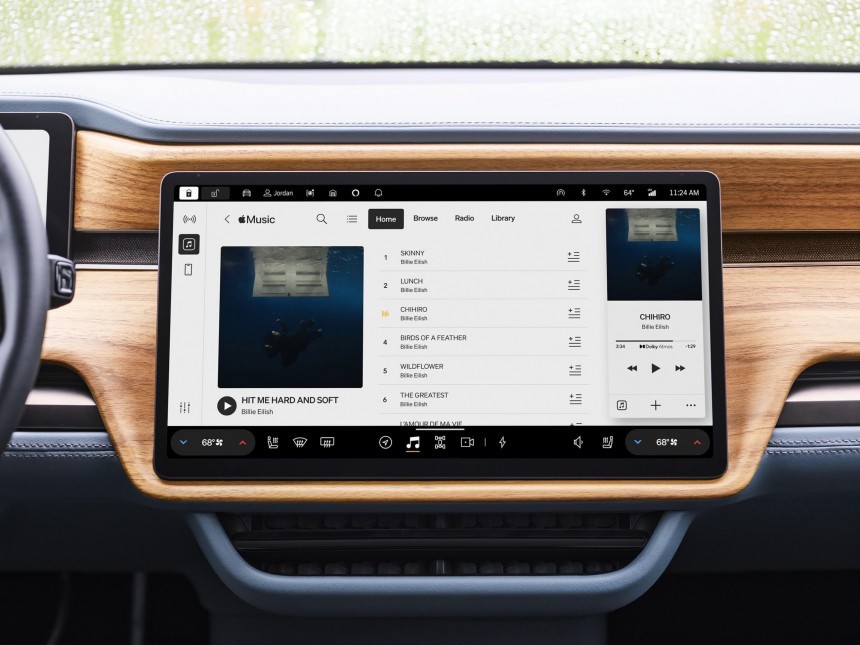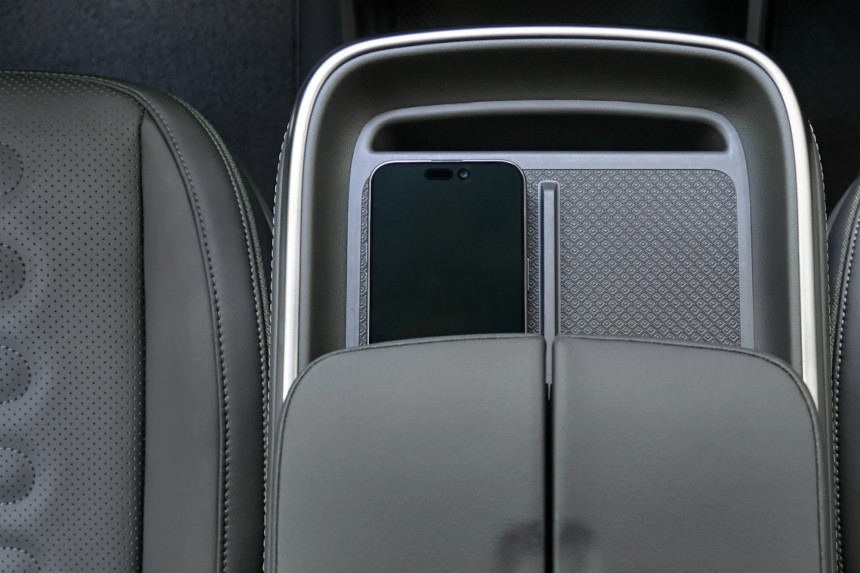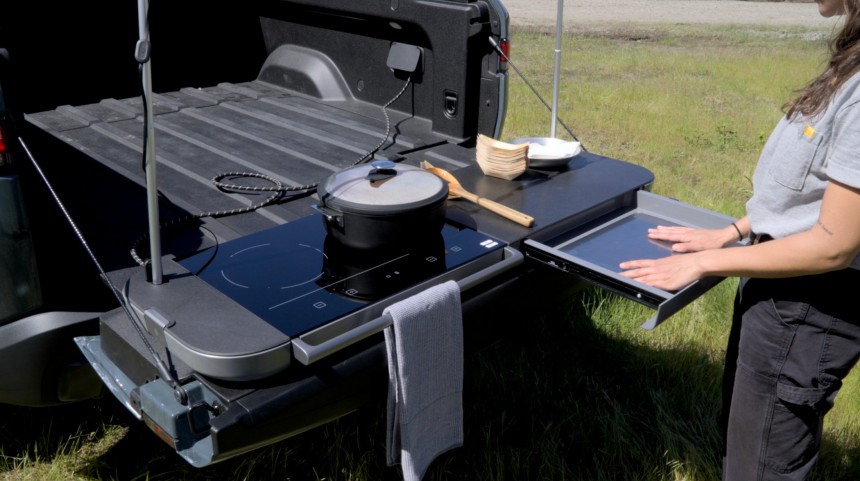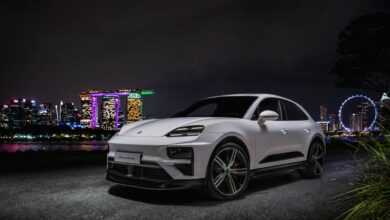2025 Rivian R1S and R1T: The Most Important Changes Introduced With the Refreshed Models
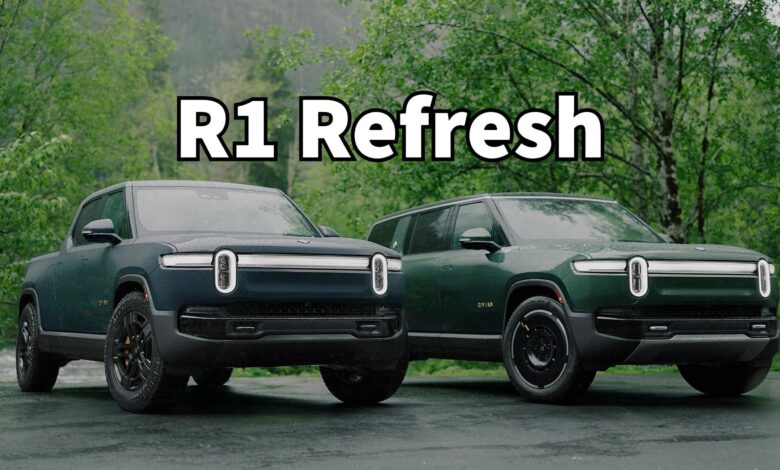
Rivian has announced the much-hyped refreshed R1 models that it’s been talking about for the past year. The 2025 R1T and R1S sport subtle design changes but have been completely overhauled underneath the skin. Here are the most important changes introduced with the refreshed R1 models.
Even when things started to look better from the supply chain perspective, Rivian faced a slowing EV demand, especially in the $100,000 price segment. To make matters worse, Rivian followed with its plans to build a second factory in Georgia when it should’ve focused on cutting costs and conserving its cash reserves. This put it in a difficult situation and delayed when it should’ve reached profitability.
Thankfully, Rivian acknowledged the situation and took swift cost-cutting measures, including building its R2/R3 compact EVs in the same factory in Normal, Illinois, where it produces the R1 models. An important part of this plan is making the current products, the R1S and R1T, profitable. This was the main goal of the refreshed R1 lineup, which at first sight seems unchanged.
However, this is no regular mid-lifecycle refresh. Underneath the skin, the 2025 R1S and R1T are markedly different from previous models, allowing the EV startup to save money without cutting on features or skimping quality. Here are the most important changes Rivian brought to its second-generation R1 EVs. Since there’s a lot to discuss, and we’ve already covered the technical characteristics and performance data, I will focus on those less known.
The nuts and bolts: A vastly improved drive train
Rivian has completely reengineered the R1S and R1T, starting with the electric motors, suspension, batteries, electrical architecture, and electronics. For the first generation of the R1 models, the startup used drive units supplied by Bosch. Meanwhile, Rivian started the development of its own motors, and last year, it installed its Enduro drive units, which were developed and built in-house, in the Dual-Motor vehicles.
The Enduro motors provided an important cost benefit, but they also proved more performant than Bosch equivalents. It made sense that Rivian ditched Bosch motors completely for the refreshed R1 models. Instead, it further developed the Enduro drive units into Ascend drive units, which power the Tri and Quad variants of the R1S and R1T. The dual-motor vehicles still use the original Enduro units.
The Ascend units comprise two electric motors in one casing, with two variants available. The larger drive unit (110 mm/4.33 in) is used on the rear axle of the tri and quad configurations. A smaller (85 mm/3.35 in) variant is used on the front axle of the Quad motor R1 EVs. Meanwhile, the Tri motor R1 uses one Enduro unit on the front axle, although with a taller gear ratio than in the older models. The new Ascend units are so efficient that the range difference between the Dual and Tri-motor configurations is minimal (420 miles versus 405 miles in Conserve mode).
Regardless of the configuration, the refreshed R1 vehicles will drive mostly in an FWD configuration, with the rear motors disconnected via a physical clutch. However, the vehicle switches to an AWD configuration in Off-road, Tow, Sport, or Snow modes. This is not different from the previous models, but Rivian has improved the clutch connection for a smoother transition and fewer vibrations. The control logic has been updated to reconnect the rear units even in Conserve mode if you floor the accelerator.
Not only the drive units, but also the suspension has been optimized. The architecture is largely a carryover from the previous models, but the tuning has been improved. Rivian already enhanced the suspension characteristics last year with a software update, but for the second-generation R1 models, hardware changes were also made. The spring rates and damper settings have been changed, making a huge impact on the ride quality.
New battery packs, with LFP as the base option
The most important change in the battery department is the adoption of lithium-iron-phosphate (LFP) chemistry for the Standard battery pack. This has a 92.5 kWh usable capacity compared to the previous Standard pack (NMC), which had 105.9 kWh. However, the new battery still provides the same 270 miles (435 km) of range thanks to efficiency improvements of the second-generation R1 models.
The LFP battery needs about 34 minutes to charge from 10% to 80%, but Rivian is confident it will improve this to 26-27 minutes with a software update in about a month. The battery modules are assembled in China, which means that the base variants of the R1 vehicles will not be eligible for the federal tax credit.
Rivian takes an interesting approach with its high-nickel battery packs. The Large pack used to offer a capacity of around 135 kWh, but the new Large battery only has 109 kWh. This has caused the range to drop from 352 miles to 330 miles for the refreshed models, offering more breathing room for the Max pack models. Rivian switched to newer Samsung SDI 53G NMC cells, the same as those used in the Max pack. It’s unclear whether the Large pack is a software-capped Max battery or has fewer modules.
The Max pack has a usable capacity of 141.5 kWh and appears to be a carryover from the previous models in terms of battery tech. However, Rivian improved the enclosure by using high-pressure die casting to simplify manufacturing and reduce weight. It also made thermal improvements, allowing the battery to charge at higher power levels for longer, flattening the charging curve and reducing charging time.
Although many hoped the refreshed models would launch with NACS ports, this is not the case. The 2025 R1T and R1S owners will still have to use an adapter to charge at a Tesla Supercharger. There are rumors that Rivian might retrofit NACS ports on existing vehicles in late 2024 or early 2025. The new charging ports on refreshed R1 vehicles certainly look like they were designed with upgradeability in mind.
Rivian overhauled the electrical architecture for manufacturing efficiency
The battery and drive train changes above benefit both Rivian and customers, but the electrical architecture changes had one important goal: reducing manufacturing costs. However, Rivian made the most important changes in a way that will enable future upgrades, thanks to ease of manufacturing, an increase in compute power, and new capabilities baked into the new zonal network architecture.
This replaces the previous domain architecture, in which all controllers needed a direct connection to the main ECU. The zonal architecture divides the computing power into three zones based on the location in the vehicle rather than functions. This reduces complexity and allows for more advanced software functions. So far, Tesla has been the champion of zonal network architecture design, but Rivian is quickly catching up.
The new approach allowed the EV startup to reduce the number of main controllers from 17 down to just seven. This was further enabled by Rivian decision to design these controllers in-house instead of relying on external suppliers. This offers better control over software and hardware and will simplify software updates. It also cuts the wiring length by over 1.6 miles (2.6 km), saving almost 50 pounds (23 kg) of weight.
In the same spirit, the infotainment PCB now shares the cooling system and PCIe interconnect with the Autonomy Compute Module. This is another page taken from the Tesla book, considering that the Media Control Unit and the Autopilot computer also share a common housing. This approach provides important benefits, saving costs and cutting assembly time.
Rivian updated the software platform, still no Apple CarPlay support
Rivian is, next to Tesla, one of the automotive industry leaders when it comes to software. However, there’s still room for improvement. For instance, owners have asked for Android Auto and Apple CarPlay support for years, although the EV startup didn’t budge. On the contrary, it explained that it wants to keep software control entirely in-house.
This hasn’t changed with the launch of the refreshed R1S and R1T. However, Rivian introduced Google Cast as a form of smartphone projection. Although this doesn’t allow the flexibility of Apple CarPlay, it provides a simple way to watch YouTube and other streaming content on the car’s infotainment display. Rivian claims there are over 3,000 apps compatible with Google Cast.
The 2025 Rivian R1T and R1S sport a new user interface that leverages the Unreal Engine capabilities. Although there is no hardware upgrade to the infotainment computer, optimized software makes the unit more responsive. Rivian also introduced Dolby Atmos support for the Premium Audio package, which comes standard on Ascend trims and costs $1,750 extra on other trims. This comes with a 17-speaker setup for a total of 1,000 watts, offering a better sound experience compared to current setups, although not quite on par with the previous Meridian system.
With the introduction of the Connect+ service, owners can use native apps to access Apple Music, Spotify, Tidal, and TuneIn streaming services. For $15 a month or $150 per year, you can also have an in-vehicle hotspot with unlimited data, map satellite images, and Gear Guard Live Cam (coming later this year). Besides Alexa Basic voice commands, subscribers gain access to the more advanced Alexa Connected. They can also set Google Assistant or Siri from their phones to respond to the voice command button on the steering wheel.
Rivian has taken an important step forward in the driver assistance department, following Tesla with an end-to-end AI automated driving system. Rivian doesn’t believe that vision is the way forward, which is why its sensor suite also includes radars and ultrasonics. Rivian uses the Nvidia Drive Orin platform, and although its automated driving features are not on par with those of Tesla, it promises to improve them quickly. For now, it focuses on highway assistance, from on-ramp to off-ramp driving, with the Lane Change on Command feature launching this summer.
Last but not least, Rivian R1 vehicles gained Ultra-Wideband support, allowing seamless integration with Apple Digital Key and Apple Wallet. This vastly improves Phone as a Key functions, allowing owners to control the cars using their iPhones or Apple Watches. Select Google Pixel phones are also supported, and more brands will be added later.
Cabin changes are subtle but welcome, nevertheless
It’s hard to notice the changes Rivian made to the cabin and the storage areas, but they are there to improve the ownership experience. Among the most criticized features of the original R1 models was the non-functional wireless charging pad. Despite appearing overengineered, the wireless charging pad could not charge compatible phones. This is why most Rivian owners bought aftermarket solutions.
The refreshed models have an upgraded pad that allows charging two phones simultaneously, thanks to a middle divider. Unfortunately, Rivian wasted the opportunity to adopt the newest Qi2/MagSafe standard. This means wireless charging in Rivian EVs is still subpar compared to Qi2/MagSafe aftermarket chargers. Well, at least they tried, although they could’ve done a much better job.
Another disappointment for potential customers was the smaller frunk, which shrunk to make way for the heat pump compressor. The frunk measures 9.9 cubic feet (280 liters) on the refreshed models, down from 11.1 cubic feet (314 liters) previously. Rivian at least tried to make the most out of the available space by offering two pockets on each side of the frunk tub.
On the plus side, the updated R1S now comes with heated seats even in the third row, in addition to the second and front-row seats. However, there are no ventilated seats except on the front row, which some people find awkward for a $100,000 vehicle. Rivian has indeed done a good job pushing the R1 lineup upmarket with premium materials and luxury features. However, it fell short of bringing more convenience features expected in this price range.
The most exciting accessories and upgrades
Rivian offers exciting new features on the refreshed R1 models, and some of them are included in the Ascend package. It also reorganized some of the features provided on the old R1S and R1T vehicles. One of the most interesting changes is offering the Camp speaker as an optional extra, regardless of the configuration. A storage drawer takes its place under the front armrest, something we’ve seen in a previous Rivian patent. Those who still want the Camp speaker will have to pay $450.
Some features are only available on the higher trims. For instance, the front tow hooks are not offered on the base models (Dual-motor with Standard battery). You must upgrade to at least the Large battery pack to get them. For the first time, Rivian offers the option of a Darkout package, which is standard on Ascend and costs $1,000 on other trims. In this case, the front tow hooks are also black.
The powered tonneau cover is also optional on R1T Adventure models, costing $1,500. However, it comes standard on Ascend trims. The same stands for the utility panel, which includes a compressor and Gear Guard cable anchors in the case of R1T for $650. On the R1S, it costs $350, as it only adds the air compressor.
The most exciting feature coming on the refreshed R1 models is the Dynamic glass roof, which costs $1,500 on Adventure models and is included with the Ascend package. It’s unavailable on the Dual Motor with Standard pack, though, so you’ll have to upgrade to at least the Large pack to add it to your configuration. The Dynamic glass roof has an electrochromic coating that switches from crystal clear to opaque at the touch of a button.
Another accessory that got everyone excited was the new compact Camp Kitchen, which includes an induction stove and a chopping board packed in a briefcase-size box. Rivian claims this will be offered “later this year” without other details. Considering that the previous Camp Kitchen designed for the R1T’s Gear Tunnel never shipped, we believe it when we see it. The new compact kitchen has the advantage that it can be used on the tailgate of both R1 models, making it more versatile.
